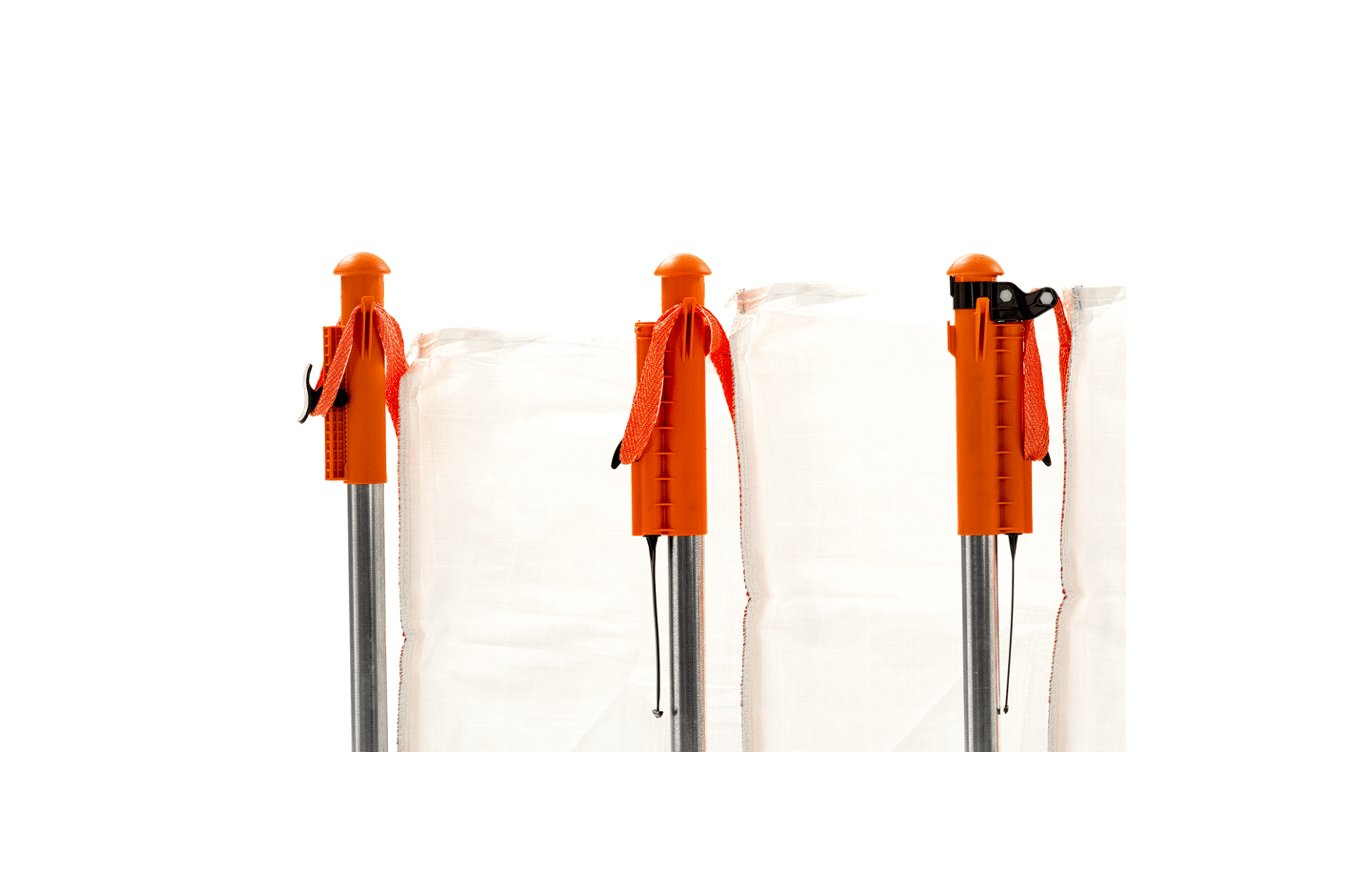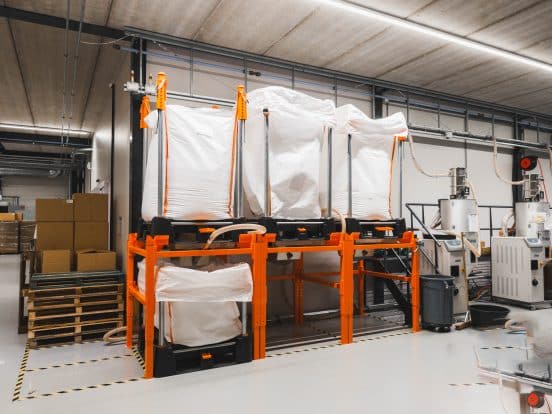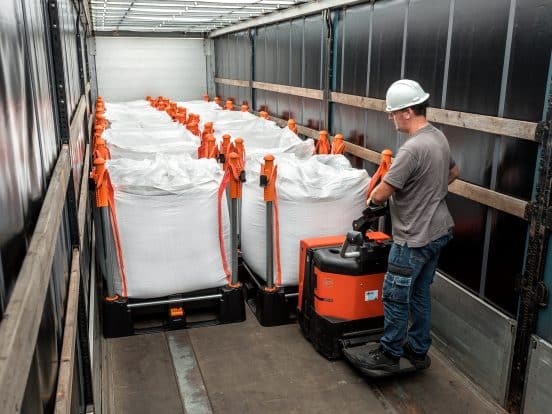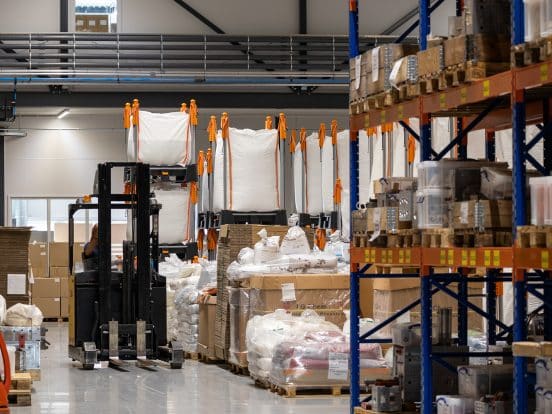

When choosing an Indus product, sometimes it can be challenging to determine which version of the Indus Neva is most suitable. The different versions of the Indus Neva poles generally have the same functions. But, every case is different. In order to offer specific solutions, we have developed 3 different versions with unique properties: the lockhead, springhead and rolling springhead.
There are 2 important differences when choosing the right product: what is the big bag flow and whether narrow or wide big bags are used. We further explain these differences below:
What is the big bag process in your factory or warehouse?
There are roughly 3 situations to be distinguished when using big bags in the factory:
The ideal situation: big bags are filled by the supplier within the Indus Neva, making it easy to transport the big bags, remove them from the truck and safely transport them to storage or production. In the production area, the big bags can be unloaded using the slide in the bottom deck.
Are narrow or wide big bags used?
Depending on the external bottom measurements of the big bag (width x length), we recommend different versions of the Indus Neva (based on a regular, non-stable-form big bag).
Note: For form-stable big bags, the bottom dimensions have a max. of 105×105 for the Lockhead and springhead because these big bags are positioned more tightly within the Indus Neva and are not bulking.
Measuring big bags
There are 2 options for measuring big bags:
At Indus, we are committed to accelerating the transformation towards sustainable, accessible, and safe handling of solids in the industry. If you require advice on the correct use of big bags in storage or production, do not hesitate to contact us at info@indus-bulklogistics.com.
Processing bulk goods is a challenge. Indus makes a completely new way of emptying big bags possible with our unloading stations.
Looking for a simple way to unload your stored bulk goods in doses? Get to know the dosing unloading station.
Indus will be present at KUTENO in Rheda-Wiedenbrück from May 14 to 16, 2024, to present the most innovative solution for storage, processing and transport in the plastic industry.
Pallets form a large waste stream within logistics companies. Reducing the wood flow for these pallets is not only interesting because of sustainability but will soon become mandatory under European legislation.
In this article, we discuss the advantages of the unique big bag system over traditional pallet racking.
Indus will be present at ACHEMA in Frankfurt from 10-14 June 2024, to present the most innovative solution for storing, processing and transporting chemicals and other bulk materials from big bags.





